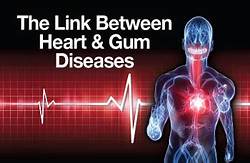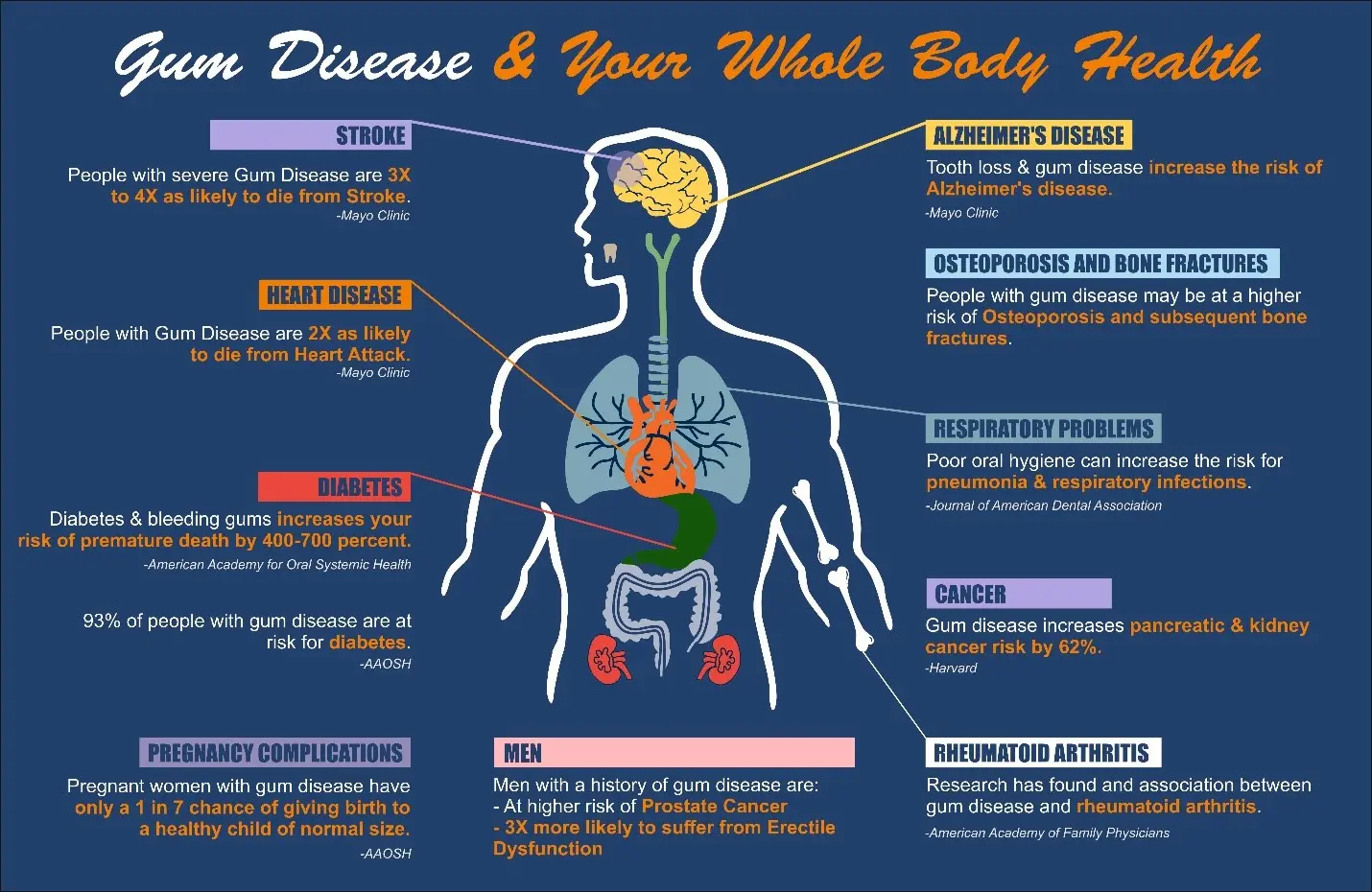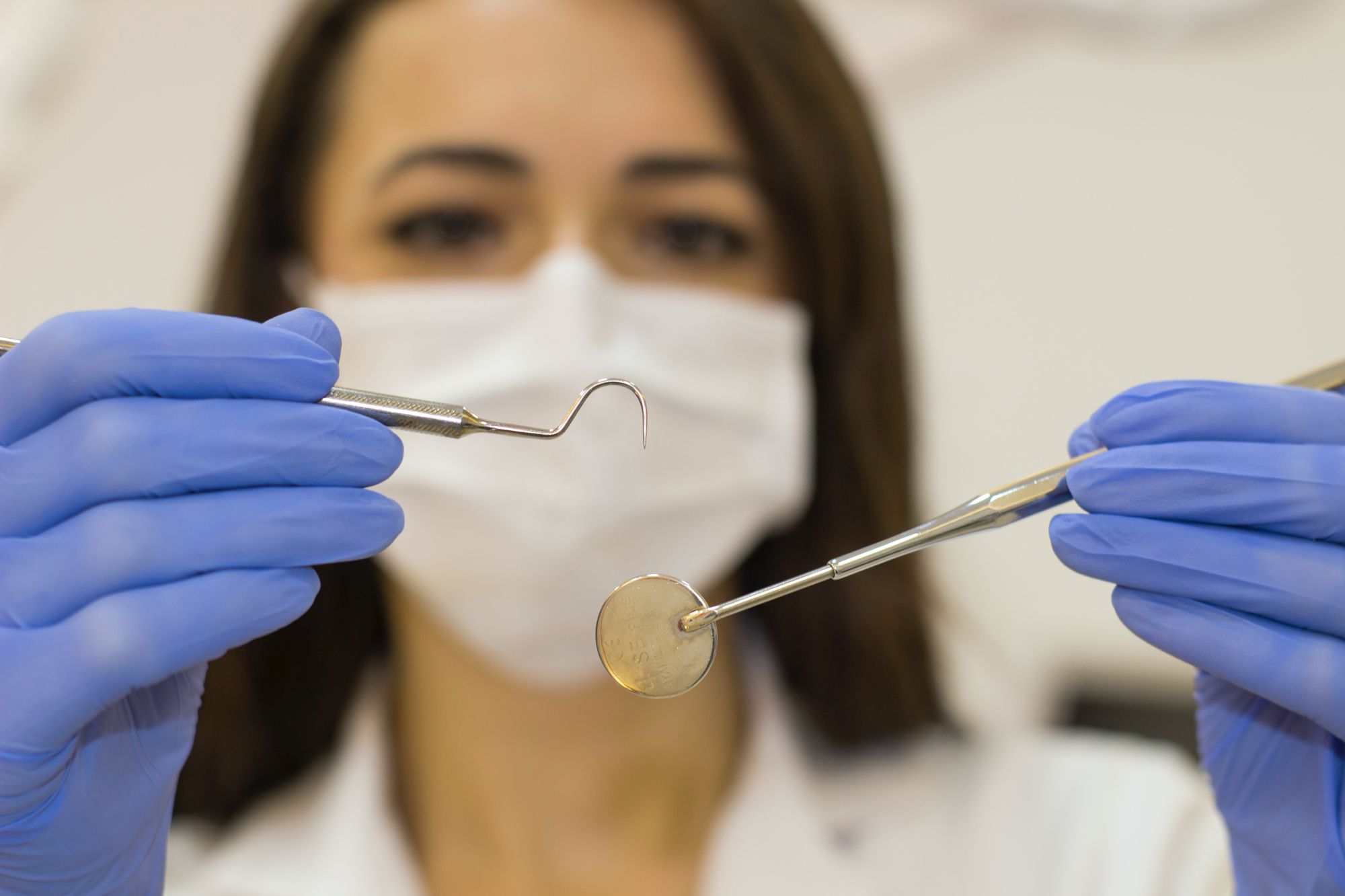
Curing your periodontal disease will not only preserve your teeth but could also save your life by preventing heart disease!
Patients presenting with symptoms of tooth pain, bleeding gums and bad breath should be advised to see their dentist immediately for appropriate treatment to reduce their gum disease, but also, crucially, to visit their physician. This will not only preserve their teeth but also save their life. This is because treating gum (periodontal) disease will prevent metabolic syndrome and associated heart disease.
Patients with metabolic syndrome and poor oral health
I have been observing for a long time that most metabolic patients visiting the Vitality Clinic have symptoms related to their oral health. We usually advise the patient to see their dentist for appropriate treatment to reduce the impact of periodontal disease. Likewise, we have also received a few referrals from dentists for the assessment and management of metabolic syndrome and vascular disease.

Helen, a 57-year-old lady, presented with frequent migraines, and with a long history of metabolic disease. She described herself as having a sweet tooth, craving sugar and carbohydrates since childhood. She had gained excessive weight that reached obesity levels. She had been on various diets over the years, with no success, and she had progressed to having high blood pressure, pre-diabetes and abnormal blood fat. She recently had two stents fitted for narrowing of her coronary arteries, which have helped her symptoms of angina.
“Her gum disease ultimately resulted in needing two stents”
Interestingly, Helen has a long history of gum disease – lasting most of her adult life. This started with tooth pain and bleeding gums, and an awareness of having bad breath. She has received 17 silver (mercury) dental fillings. And she has had multiple courses of antibiotics for gum infection and repeated gum abscesses.

Helen’s BMI was in the obesity range at 31.4, blood pressure was high at 145/95, waist size high at 44 inches. She has a dark patch (acanthosis nigricans) in her right armpit, a common sign of metabolic syndrome. Her liver was enlarged and probably fatty. Routine blood tests revealed high total cholesterol at 5.9, high LDL (bad guy) at 4.9 and a low HDL (good guy) at 0.93, high uric acid level at 425, HbA1C (a marker of blood sugar control over the last 3 months) was high at 39, hs-CRP (inflammation marker) high at 2.7.
Helen's risk of heart attack
Despite having the stents fitted, Helen’s risk of suffering an acute vascular event was high. According to her blood tests, she has a high tendency to form blood clots, reflected in high triglyceride at 4.4, high fibrinogen at 15.2, together with having small sticky cholesterol particles. These together increase her chance of forming clots, and if one blocks a heart artery, this can result in a heart attack.
Helen had long ignored her symptoms of painful teeth and bleeding gums, on the assumption that these were common symptoms, which should resolve spontaneously. She assumed gum disease was a purely dental problem and not linked to metabolic syndrome or heart disease.
Gum disease is very common among the general population. It affects 75% of the adult population. Gum disease sufferers have 2 to 3 times the risk of having a heart attack than others. Studies have confirmed that gum disease does not only increase your risk of vascular disease, but also of obesity, diabetes, dementia, and colorectal cancer.

In this article, I’m going to review the link between periodontal disease and metabolic syndrome, and its serious complications including vascular disease. I will discuss the stages of gum disease, and how to prevent it and the associated obesity, diabetes, and vascular disease.
Everyone is born with beautiful pink (this varies between ethnic groups) gums of soft connective tissue, which covers the bone that supports your teeth. The gums stick tightly around your teeth to block any potential space (pockets) that can promote bacterial growth.
Plaque leads to a range of dental problems – and more
Gum diseases start with a build-up of plaque, a sticky substance that contains bacteria. Plague builds up along the gum line and can initially infect the gum resulting in gingivitis. Attending to this with good mouth care and the removal of plaque by regular and effective tooth brushing and flossing can arrest the disease at this early stage.
If left unattended, gum disease can progress to break the seal between the gums and the teeth, causing small spaces or pockets. These allow the infected plaque to gain access to the deep supportive connective tissue, causing periodontitis, the advanced form of gum disease.
Gum disease presents with the triad of tooth pain, bleeding gums on brushing or flossing, and bad breath. Plaque contains bacteria, which irritates the gums and causes inflammation and recurrent infection. The gums are red and swollen during the early stages of gingivitis. The bacteria ferment sugar to produce lactic acid, which can melt the tooth enamel, resulting in tooth decay and dental caries.
The problem with sugar
Eating sugar helps the bacteria to produce more lactic acid and cause more damage. The disease progresses to periodontitis, which shows up as receding gums, meaning the teeth eventually become loose and fall out.
Plaque can die off to form a solid calcified coating called tartar or calculus. The long-term effects of periodontal disease can cause loss of jawbone which can affect whether dental implants can be used.
Minor cases of gum disease can usually respond to good oral hygiene. The advanced disease requires regular visits to the dentist or hygienist for thorough cleaning (scaling) to remove any hardened plaque (tartar) and to prevent plaque from building up.
Risk factors for gum disease

These include poor oral hygiene, a high sugar diet, dry mouth (stress, dehydration and autoimmune conditions), medications such as birth control pills, diuretics, anticholinergic drugs or sleeping pills, smoking or lack of sleep.
The importance of sleep
Periodontal disease is strongly associated with obesity, metabolic syndrome, diabetes, and vascular disease. It triggers chronic low-grade inflammation, which leads to insulin resistance, the hallmark of these metabolic conditions. Insulin resistance is associated with increased body mass index (BMI) and waist circumference.
Oral care and plaque control can reduce the severity of metabolic syndrome risk factors and related vascular disease. There is enough evidence to suggest that this can also reduce the inflammatory markers.
Oxidative stress and inflammation
The strong association between metabolic syndrome and periodontal disease has been suggested in many studies. The link is due to a combination of systemic oxidative stress and inflammatory response.
When examined individually, the components of metabolic syndrome most closely related to periodontal disease are dysglycaemia (abnormal blood sugar) and obesity. Lower contribution is observed in dyslipidaemia and hypertension. Studies suggest the odds of periodontitis increase with the number of metabolic syndrome components present in one individual.
These findings confirm that physicians should consider referring patients with metabolic syndrome to dentists, and dentists could refer patients with metabolic syndrome to physicians!
Tips to prevent dental plaque
These include reducing your sugar intake, thorough dental hygiene – brushing your teeth twice daily and cleaning the interdental spaces by flossing or the use of interdental brushes – and stimulating saliva flow by chewing your food thoroughly and chewing gum. More broadly, rebalancing your lifestyle will also help – stop smoking, eat a balanced diet, get adequate sleep at night, reduce your stress levels, and enjoy more sunshine.

Helen realised the importance of working diligently to reduce her periodontal disease and at the same time lowering her risk of vascular disease. Now knowing her genetic make-up and biochemistry, she was able to take steps to successfully burn significant fat and lose weight. This has improved her atherogenic risk (risk of making clots in the circulation), the immediate threat to her health. Her blood pressure, blood sugar and lipid profiles improved greatly and on minimal medication. Above all, she was more relaxed, much happier and reached a higher level of physical and mental functioning with a positive impact on her quality of life.
Transform your health
So, you can see my friends that poor dental health can have far-reaching consequences, but the solution is relatively straightforward. Certainly, in minor cases, better oral hygiene can resolve the problems, whilst more advanced cases may need professional intervention. Even though Helen’s situation was serious – the two stents, the risk of clots and heart attacks – she was able to turn her health around.
How is YOUR oral health? Please share your thoughts and ask any questions on this subject.
Guest article by Dr Ibrahim MRCP, FRCP, AMRP. Sharief Ibrahim is a consultant physician and certified functional medicine doctor with 40 years in medical practice, 25 years of them in the NHS. He is the founder of the Vitality Clinic and sees patients in Weybridge and Harley Street, London.
References
Brundavan Dental Knowledge/Plaque
https://brundavandentalclinic.com/plaque/
Periodontal disease and metabolic syndrome
https://onlinelibrary.wiley.com/doi/full/10.1111/idj.12264
Metabolic syndrome and periodontal disease: an overview for physicians
https://pubmed.ncbi.nlm.nih.gov/31803642/
Gum disease and heart disease that common thread
https://www.health.harvard.edu/heart-health/gum-disease-and-heart-disease-the-common-thread






